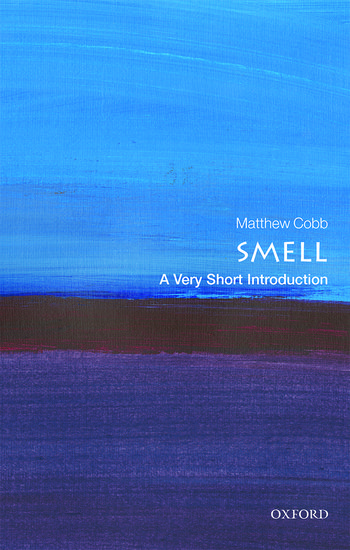Home >
A Very Short Introduction >
Smell (Medical)
A Very Short Introduction | Medical
Smell
ISBN: 9780198825258
Series: A Very Short Introduction
Smell (Medical)
A Very Short Introduction Smell (Medical) Media > Books > Non-Fiction > Education Books Expect Delays of Up to 4 Weeks| Order Below |
ISBN
9780198825258 (10-digit ISBN: 0198825250)
- Description
- Key Features
- Series Description
- Table of Contents
- Summarises the latest neurobiological research on smell, in humans and other mammals, as well as in insects and fish
- Discusses how our genes determine what we can and cannot smell, and why some people like a given smell and others do not
- Explores how animals use smell to navigate and communicate
- Considers the future of smell in a world of robots and climate change
Our sense of smell - or olfaction as it is technically known - is our most enigmatic sense. It can conjure up memories, taking us back to very specific places and emotions, whilst powerful smells can induce strong feelings of hunger or nausea. In the animal kingdom smell can be used to find food, a mate, or a home; to sense danger; and to send and receive complex messages with other members of a species. Yet despite its fundamental importance in our mental life and in the existence of all animals, our scientific understanding of how smell works is limited.
In this Very Short Introduction, Matthew Cobb describes the latest scientific research on smell in humans and other mammals, in insects, and even in fish. He looks at how smell evolved, how animals use it to navigate and communicate, and disorders of smell in humans. Understanding smell, especially its neurobiology, has proved a big challenge, but olfactory science has revealed genetic factors that determine what we can and cannot smell, and why some people like a given smell while others find it unbearable. He ends by considering future treatments for smell disorders, and speculating on the role of smell in a world of robots.
Oxford's Very Short Introductions series offers concise and original introductions to a wide range of subjects--from Islam to Sociology, Politics to Classics, Literary Theory to History, and Archaeology to the Bible.
Not simply a textbook of definitions, each volume in this series provides trenchant and provocative--yet always balanced and complete--discussions of the central issues in a given discipline or field. Every Very Short Introduction gives a readable evolution of the subject in question, demonstrating how the subject has developed and how it has influenced society. Eventually, the series will encompass every major academic discipline, offering all students an accessible and abundant reference library.
Whatever the area of study that one deems important or appealing, whatever the topic that fascinates the general reader, the Very Short Introductions series has a handy and affordable guide that will likely prove indispensable.
Please note: As this series is not ELT material, these titles are not subject to discount.
List of illustrations
1: How we smell
2: Smelling with genes
3: Animal olfaction
4: Human smelling
5: The future of smell
6: Smelling to remember, remembering smells
7: Chemical signals
Further reading
Index
Our sense of smell - or olfaction as it is technically known - is our most enigmatic sense. It can conjure up memories, taking us back to very specific places and emotions, whilst powerful smells can induce strong feelings of hunger or nausea. In the animal kingdom smell can be used to find food, a mate, or a home; to sense danger; and to send and receive complex messages with other members of a species. Yet despite its fundamental importance in our mental life and in the existence of all animals, our scientific understanding of how smell works is limited.
In this Very Short Introduction, Matthew Cobb describes the latest scientific research on smell in humans and other mammals, in insects, and even in fish. He looks at how smell evolved, how animals use it to navigate and communicate, and disorders of smell in humans. Understanding smell, especially its neurobiology, has proved a big challenge, but olfactory science has revealed genetic factors that determine what we can and cannot smell, and why some people like a given smell while others find it unbearable. He ends by considering future treatments for smell disorders, and speculating on the role of smell in a world of robots.
Key Features
- Summarises the latest neurobiological research on smell, in humans and other mammals, as well as in insects and fish
- Discusses how our genes determine what we can and cannot smell, and why some people like a given smell and others do not
- Explores how animals use smell to navigate and communicate
- Considers the future of smell in a world of robots and climate change
Series Description
Oxford's Very Short Introductions series offers concise and original introductions to a wide range of subjects--from Islam to Sociology, Politics to Classics, Literary Theory to History, and Archaeology to the Bible.
Not simply a textbook of definitions, each volume in this series provides trenchant and provocative--yet always balanced and complete--discussions of the central issues in a given discipline or field. Every Very Short Introduction gives a readable evolution of the subject in question, demonstrating how the subject has developed and how it has influenced society. Eventually, the series will encompass every major academic discipline, offering all students an accessible and abundant reference library.
Whatever the area of study that one deems important or appealing, whatever the topic that fascinates the general reader, the Very Short Introductions series has a handy and affordable guide that will likely prove indispensable.
Please note: As this series is not ELT material, these titles are not subject to discount.
EASY ORDER FORM
PRICES LISTED INCLUDE CONSUMPTION TAX
Price Before Tax:
¥1,790


